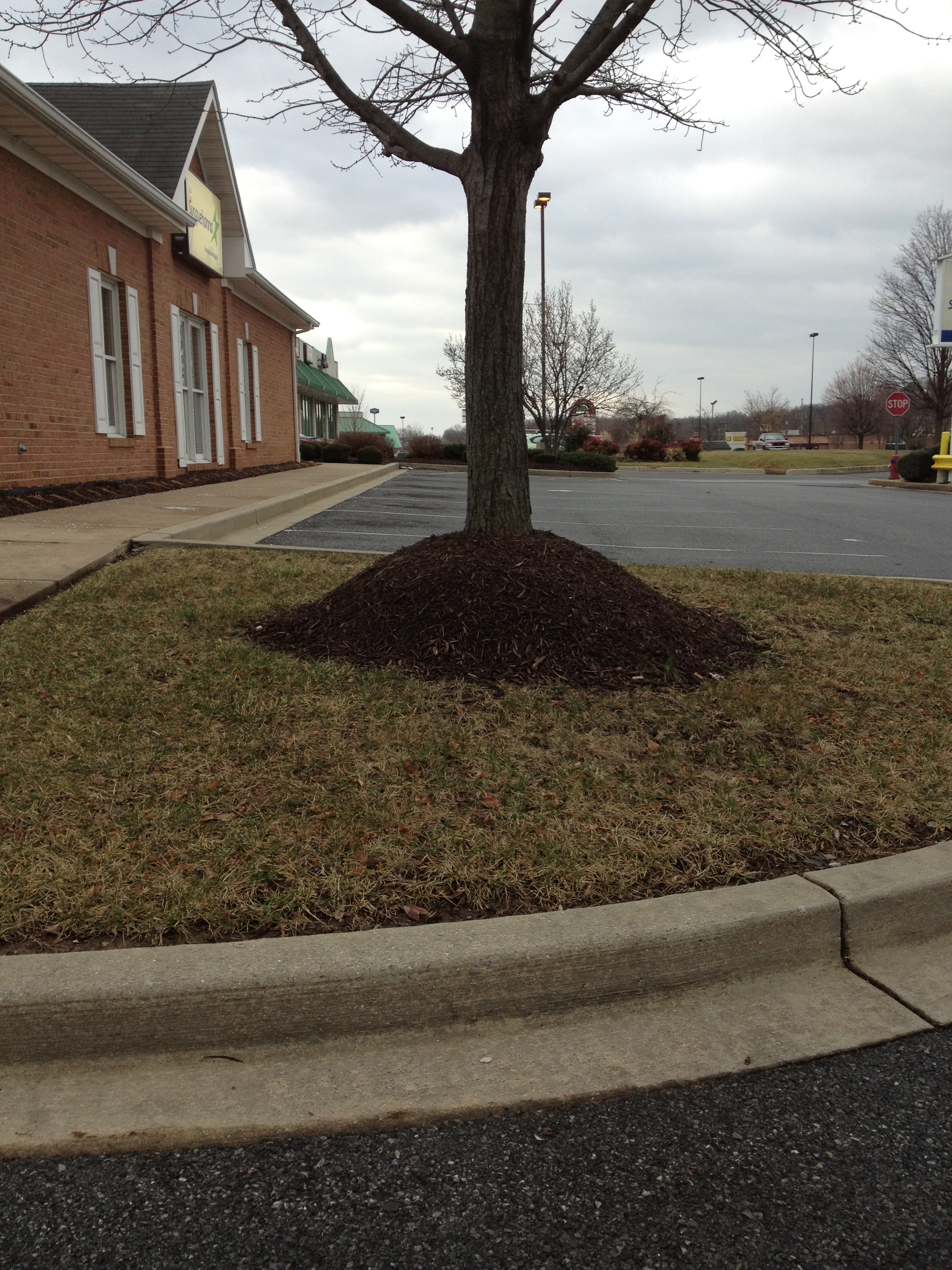Whether it be insect pests, fungal diseases or simple decline, many tree problems can be traced to the tree’s root zone, to what is happening beneath the soil surface. We tend to overlook this fact, first, because the root zone is hidden and it is only natural to focus on what we can see and, second, trees can be very delayed or subtle in showing signs of stress or decline due to root impacts. As a result, by the time we notice a problem it is often too late and we begin treating the symptoms we can see while ignoring the root cause. Dare I say that we end up barking up the wrong tree?
With this in mind I have listed below the most common human-induced tree ‘stressors’ that I encounter in my work. General approaches to addressing these stressors are mentioned just to get you thinking but for details on what you can do or what you may need professional help for please contact your local extension agent, Division of Forestry office, or certified arborist listed by location at www.goodtreecare.com. Other online resources are listed at the end.
- Compaction: A ubiquitous slow killer of trees. Much of a tree’s critical root functions occur within the top 6 to 12 inches of the soil surface. An equal mix of air and moisture are required for those functions to take place and it does not take much to crush and smother that critical zone. Avoid driving or parking vehicles under trees – this should be a ‘no go zone’ for anything heavy, ever.
- Mechanical damage: Trenching through a tree’s root system or any excavation that leads to change in soil grade can dramatically impact root health. There are amendments and other treatments to mitigate these impacts but the best thing is to avoid the damage in the first place.
- Poor soils/wrong tree: We rarely have control over the soil environment in which we plant our trees but if we know the limitations we can choose a tree more suited for the existing conditions. Before planting, get your soil tested and make educated decisions on tree species based on the results. And if you have an existing tree under duress, a soil analysis can suggest an underground approach to improving the tree’s health. Often this requires patience, expertise and specialized equipment.
- Planting too deep: If there is no trunk flare at the base and the tree looks like a telephone pole coming out of the ground, this could suggest stunted and malformed root development, including ‘girdling roots’ that can strangle one another or the trunk itself. This is very difficult to correct as it may require excavation, so proper planting is key! And never pile mulch or soil on the trunk (see image of ‘volcano mulching’) – that is basically the same as planting too deep and can promote insects, rot and disease.
- No mulch or organic matter: While improper mulching can be harmful, including a layer of organic matter at the base of trees provides numerous benefits, both immediate and long term. If nothing else, with mulch you will avoid the age-old conflict with turf grass that outcompetes for nutrients and moisture, and encourages ‘lawn mower’ disease that is a pernicious killer of trees on a massive scale.
- Improper watering: Slow and deep irrigation is the key. This will prevent the water from scattering laterally along the soil surface and ensure that more roots develop deeper in the soil, building the capacity to withstand periods of drought. To prevent the establishment or spread of disease avoid sprinklers or anything that splashes or might wet the tree’s bark. Finally, be sure you have a watering plan before you plant any trees, and don’t forget that even large, established trees may need some water if they show signs of decline.
Roots are a tree’s life source. So even if you see a problem high up in the crown, remember that you might be standing on the solution.
Online resources:
Urban Tree Foundation – http://urbantree.org
Casey Trees How-To Guide – http://caseytrees.org/resources/howto/
US Forest Service Tree Owner’s Manual (downloadable copy) – http://na.fs.fed.us/urban/treeownersmanual/
 Contact Us
Contact Us

